BY GAIL GOLD
After a ranch vacation in Tucson, friends asked me to visit them in their adopted city. It had been many years since I had been in Tucson, so that sounded very appealing. Two days of sightseeing of most interesting, different, and famous places were on the agenda.
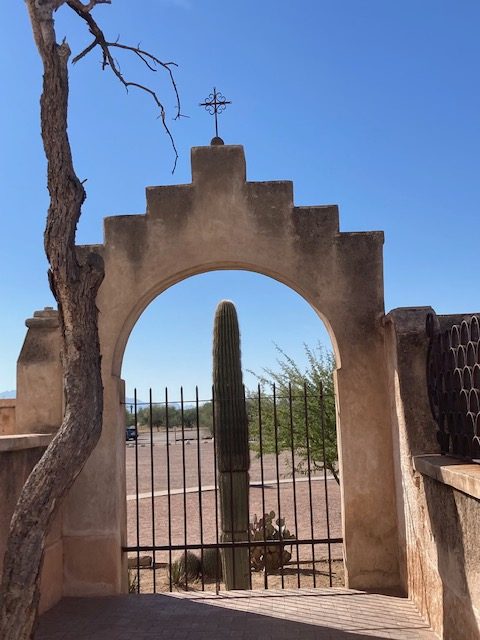
A distinct desert view at San Xavier.
Day 1 was the Mission of San Xavier, the only remaining intact Arizona mission, a national historical landmark. This was our first stop. The Mission is still a parish for the Tohono O’odham people and an example of Mexican Baroque architecture. Father Kino, a Jesuit missionary, traveled through the northern part of Mexico and the southwestern parts of the US bringing Catholicism to the area’s indigenous peoples.
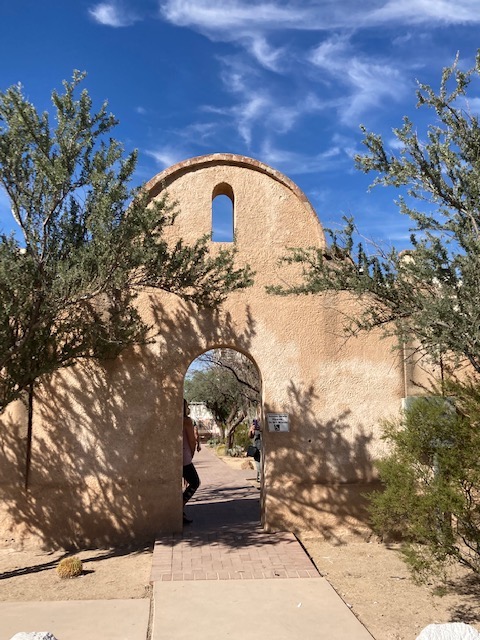
Gate to San Xavier.
Work on the Mission continued for 14 years before the money ran out. Various flags have hung over the Mission, including Spain and the Tohono O’odham Nation. Today San Xavier remains a working church, with services throughout the week. The morning we visited, we saw a bride and groom with their families and guests exiting the church, much to our delight.
There is also a mission school run by the Franciscan Sisters of Charity from grades K-8. Students from the surrounding area are there every day. Donations are welcome and there are 2 docent-led tours daily Monday through Saturday.

San Pedro chapel.

Another view of the San Pedro chapel.
The next mission was Tumacacori, now a National Historical Park, serviced by the National Park Service of the U.S. Department of the Interior. After entering the building, you are in a lovely, quiet garden. Between the late 1600s and the mid-1800s, Spanish priests, then soldiers and settlers, arrived in the valley along the Santa Cruz River. These first settlers farmed, hunted game, and harvested wild plants. Experts in survival, they found palo verde, mesquite, cacti, and agave. Summer and fall proved abundant, but they were always subject to the extreme whims of desert weather.

Tumacacori.
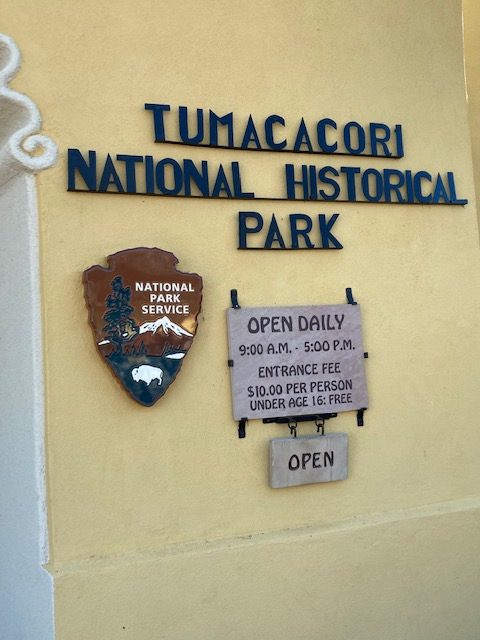
Tumacacori entrance.
In the later years, the Spanish priests, followed by settlers and soldiers, arrived in the valley. O’odham moved into the Tumacacori mission, finding European ideas about everything from religion and community to building. They adopted the priests’ farming methods, which were new to them: metal tools and planting seeds. Also new were the crops of wheat, fig, apricot, pomegranate, peach, and quince. (There was a basket of quince at the entrance for visitors to take during my time there.)
Although now just the remains of the orchards and school are visible, the beautiful church is intact, making it possible to walk and imagine life around you and mass taking place.
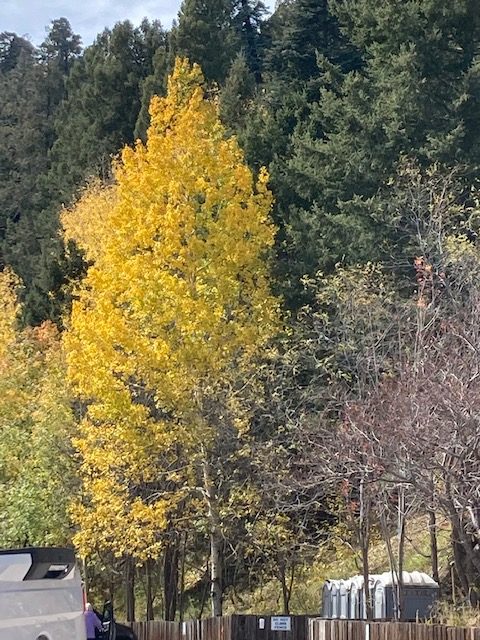
Fall trees.
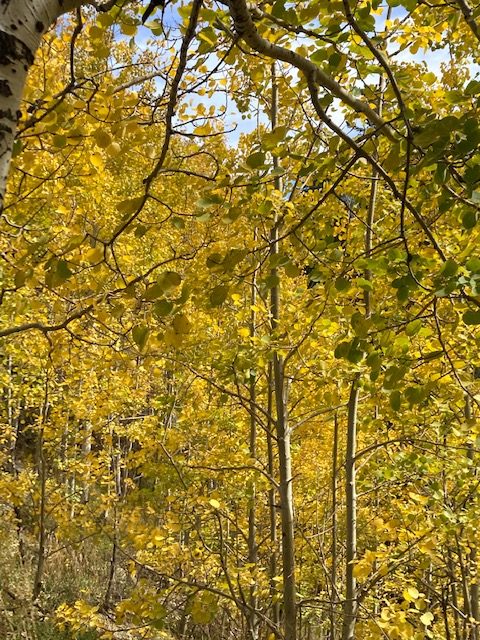
Vibrant leaves.
Day 2 was a trip to Mount Lemmon via a drive through a winding paved highway, to the highest peak of 9157 feet. From base to apex, one goes through 5 vegetation zones: Saguaros, Sonoran Desert shrub, oak chaparral, madrean, and pine spruce fir, and golden yellow aspens. There are stunning geological rocks, arches, and phantom-like spires called hoodoos, very similar to the Utah National Park Bryce Canyon. National Geographic says, “What most people don’t know is that these towering rock formations emit a unique vibration, or what some geoscientists call their song.” Or you could call it rock music!

Hoodoos.

More hoodoos along the highway.
We weren’t prepared for the drastic change from the desert floor to a ski area with a running chair lift, and were not bundled up enough for the cold, cold temperatures up there. Though chilly, the drive was spectacular, both ascending and descending. Although Mt. Lemmon has suffered devastating wildfires resulting in black tree remains, we saw many signs of life, including birders, campers, and hikers all along the road up.
With its history, diverse natural surroundings, and beautiful sights, I highly recommend a visit to Tucson—it won’t disappoint.






